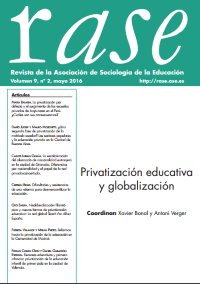La privatización por defecto y el surgimiento de las escuelas privadas de bajo costo en el Perú. ¿Cuáles son sus consecuencias?
| Year | : | 2016 |
|---|---|---|
| Author/s | : | Maria Balarin |
| Area/s | : | Education and learning |
Balarín, María (2016). La privatización por defecto y el surgimiento de las escuelas privadas de bajo costo en el Perú – ¿Cuáles son sus consecuencias? Revista de la Asociación de Sociología de la Educación (RASE), 9(2), 181-196.
Since the 1990s, when for-profit investment in education was liberalized, Perú has seen a constant growth in the supply and demand of private education services. This tendency has deepened in the last decade in a context of economic growth that has allowed many families to migrate to the private sector. The growth of the private education market has taken place, largely, behind the state, which regulates it minimally and ineffectively. The result is an extremely heterogeneous private education market, with an important sub-sector of low-fee –and often low-quality– private schools for low-income families. The paper analyses this process, explores poor families decisions to send their children to private schools and poses a series of considerations about the effects of the process of default privatization on the equity of the Peruvian education system.







